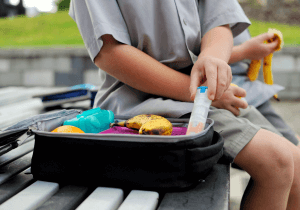First Aid Guide for School Emergencies – Do These 3 Things First

We know that knowledge is power and when it comes to first aid for schools
This is essential knowledge that people working with children really need.
There is a specific first aid course for education and care settings as it concentrates more on child specific scenarios.
Having a workplace qualified in first aid for children also promotes a safer, confident and healthier environment. This enhances the school environment, making it a safer place to be for young children.
So many children will have some kind of accident while they are at school. They can range from mild, moderate to severe, including head injuries, lacerations and broken bones.
We should not underestimate our ability to help a casualty even with the simplest of first aid techniques.
- Rolling an unconscious child on their side so that they dont choke if they vomit
- Administering an asthma inhaler
- Administering an Epipen during an allergic reaction
- Applying an arm sling to reduce pain and protect a fractured arm
It is essential to have confidently trained staff and students who can utilise their skills and who are not afraid to act quickly in an emergency. More importantly staff must recognise that they can apply the right treatment to prevent any further damage.
Schools are required to provide an adequate amount of first aid trained staff dependent on the size of the school.
Without a quick response from a first aid trained individual, a mild injury might turn into a severe one. Serious injuries are much harder and more complex to treat.
For example, anaphylaxis tends to take hold the longer it is allowed to. Quick response with an Epipen can stop the body systems going into an even more severe response.
To ensure the safety of all students and staff, it is essential to have first aid in the schools. It is vital to make everyone aware of the basic methods they should apply after an accident occurs.
There are a few things that should always be assessed first when tending to someone in an emergency, once we have deemed the environment to be safe to enter:
1. Are they conscious? Can you elicit a response from them? Do they have their eyes open or are they unresponsive? If they are unresponsive, you must call 000 straight away and get emergency assistance.

2. Are they breathing or having breathing difficulty? Here we should use the LOOK – LISTEN – FEEL approach. Lower your cheek to their mouth looking at the toes, then look for chest rise, listen for breath sounds, feel for breath on your cheek. Are they breathing? If yes, we can leave them still until the ambulance arrives or put them in the recovery position if appropriate (if no spinal injury is suspected)
3. If there is no response and they are not breathing – age appropriate CPR should be commenced. See our CPR chart download here.
Importance of first aid for a school emergency
Teachers, students and other school workers with good knowledge of what to do in a school emergency are likely to be more active and alert to making sure they are not vulnerable to unnecessary accidents or injuries. First aid in schools, promotes a sense of safety. It makes them capable of managing incidents and assessing casualties. The more they are aware of the accidents, illness and treatments, the more they become conscious.
Quick treatment in a school emergency
First aid is the initial treatment given to a child who has had an accident or injury. Some injuries don’t need an ambulance, they can simply be treated with the contents of an appropriate first aid kit.

People equipped with first aid skills can handle school emergencies in an efficient manner. Their quick response and right methods of treatment can help save lives. A person trained in first aid specifically for children and education settings will be more equipped and confident in a crisis situation.
There is no substitute for formal first aid training, but these tips above will certainly help. When you work with young people, your first aid training and keeping yourself composed and calm could be the difference between life and death for a student or young child in an emergency situation.
Want more? We’ve got you covered…
Our Baby First Aid Courses
Our baby first aid courses are available in person in your home and online. We run classes in your home with groups of 2, 4 or up to 10 in Sydney & Melbourne and you can book in 3 easy steps!
- Pick your class
- Follow the prompts to purchase
- We will contact you within 24 hours to lock in your date of choice
Our First Aid Certificate Courses
We run most of the popular first aid courses Australia wide. HLTAID011 Provide First Aid, HLTAID009 Provide CPR, HLTAID012 Provide First Aid in an Education & Care Setting, RAMOAP (anaphylaxis), Mental Health first aid and CPR/LVR to name a few.
Book your public spot online or contact us if you have a group of 5+ people for onsite training.
Here are some other resources you may enjoy!
FREE GUIDE: Your Virtual Baby First Aid Kit
FREE GUIDE: Introducing Common Allergy Foods & Allergic Reactions
FREE Workplace Emergency Preparedness Plan: Grab this at the bottom of every page!
Follow for baby & child first aid and allergy info and tips on Instagram, TikTok & Facebook all @thenestcpr
